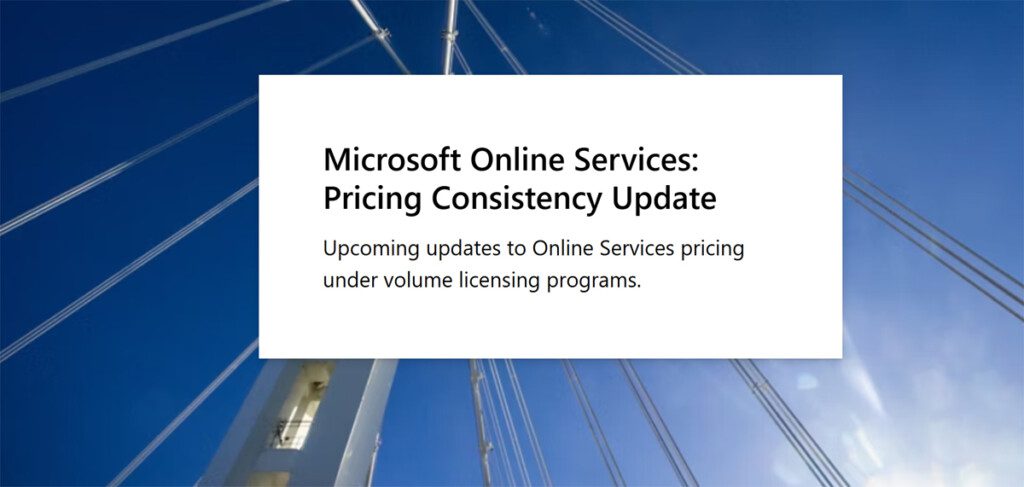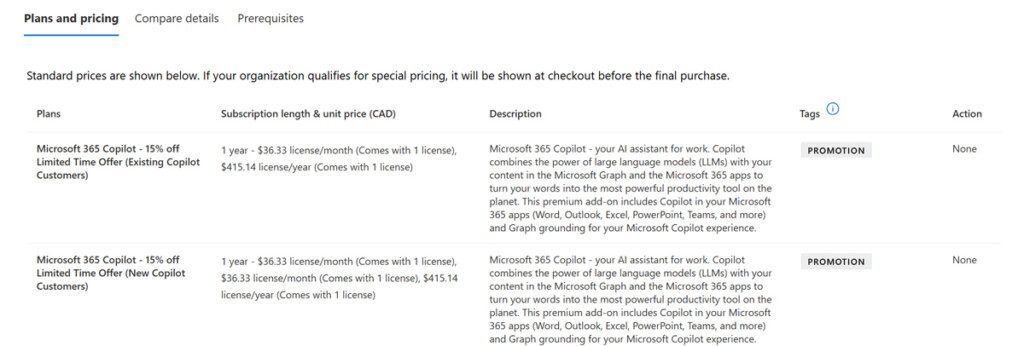The impact of Microsoft ending licensing volume discounts for enterprises
Table of contents
If you’ve been relying on those built-in licensing discounts to soften the cost of Microsoft 365, Dynamics 365, Azure, Power Platform, or even Copilot, your renewal cycle is about to look very different.

What’s changing with Microsoft licensing?
For years, Microsoft’s EA program used price levels A–D: the more seats or consumption you committed, the bigger the discount. From Level B up, customers could expect 6–12% off the list price.
As of November 1, 2025, those volume discounts go away for Online Services. Every enterprise, whether you have 250 seats or 25,000, will pay the Level A list price.
A few important clarifications:
- Timing matters. Existing contracts won’t change mid-term. The new rules apply at your next renewal or when you buy new services after Nov 1, 2025.
- Scope matters. This change affects Online Services under EA and MPSA. On-prem software, Education, and Government licensing are not impacted.
- Azure is already there. EA discounts for Azure consumption were flattened years ago. What’s changing now are mostly seat-based subscriptions like Microsoft 365 and Dynamics.
Microsoft’s stated goal is to simplify pricing and align it with the New Commerce Experience (NCE) model — the same flat, predictable pricing you see in CSP.
How will Microsoft licensing changes impact enterprises
For many organizations, those discounts weren’t just a nice-to-have; they were built into budgets and business cases. Removing them has some apparent ripple effects:
- Budget impact: Your Microsoft bill will climb 6–12% (or more) at renewal, even with no extra seats.
- Less procurement leverage: The classic strategy of playing seat counts against Microsoft for better terms loses power.
- License efficiency becomes critical: With list pricing, every unused license or oversized plan is wasted spend at full price
However, this might be the wake-up call many enterprises needed to start optimizing their Microsoft licenses.
Microsoft licensing optimization: The new enterprise superpower
If discounts are off the table, the only way to control costs is to ensure you’re only paying for what’s used. That means sharpening your license management practices:
- Audit regularly. Use Microsoft 365 usage reports or third-party tools such as Syskit to spot inactive accounts and unused features.
- Reclaim licenses. Automate workflows to retrieve licenses from departed or inactive users and reassign them instead of buying more.
- Right-size plans. Not everyone needs E5. Many users can be just as productive on E3, F3, or Business Premium.
- Optimize Azure. Use Azure Cost Management and Advisor to shut down idle resources, right-size VMs, and apply Reserved Instances or Savings Plans where workloads are steady.
- Make it continuous. Don’t wait until renewal, build license optimization into monthly IT governance so you’re always running lean.
Think of it this way: discounts used to hide inefficiency. Now, every unused seat or idle VM is full list-price waste.
Which Microsoft licensing discounts remain
Here’s the interesting twist: Microsoft 365 Copilot has been sitting on a 15% promotional discount for nearly a year now.

This “limited time” offer has been extended multiple times (and currently runs through at least September 2025). It shows that while blanket program discounts are ending, Microsoft is still willing to use targeted promos to accelerate the adoption of new, strategic products, especially when it comes to AI.
So don’t expect discounts on bread-and-butter Microsoft 365 E3/E5 seats, but keep an eye out for promos around premium add-ons like Copilot, Security, or Viva.
How to prepare for Microsoft ending licensing volume discounts
Here’s how to get ahead of this change:
- Check your renewal dates. If your EA renews before Nov 1, 2025, you may be able to lock in one last discounted term.
- Model your future costs. Sit down with finance and forecast what your Microsoft spend looks like at list price.
- Get serious about optimization. Build license audits, reclamation, and rightsizing into your regular IT operations.
- Track promotions. Copilot’s 15% discount is proof Microsoft still plays with incentives — but on their terms, and product-by-product.
- Talk to your account team now. Understand what flexibility remains (multi-year commitments, CSP options, partner incentives).
This isn’t just a licensing footnote; it’s a significant shift in Microsoft’s enterprise pricing model. By eliminating EA discounts, Microsoft is leveling the playing field and forcing IT leaders to move from negotiating discounts to controlling usage.
The good news? With the right optimization strategies, enterprises can offset much of the cost increase. The bad news? If you’ve been on autopilot with licensing renewals, you could be in for a budget shock.
Start preparing now. Because come November 2025, the “buy more, pay less” era of Microsoft licensing will be over, and every seat will count.
For more about Microsoft 365 licensing, check out my video with Microsoft MVP Drew Madelung where we go in depth on the subject of licensing.
How can Syskit help you?
To negotiate effectively with Microsoft, you need more than just a rough estimate; you need a clear, centralized view of your license entitlements and actual usage. With Syskit Point, every license is tracked in real time, so you can easily validate utilization across the organization and pinpoint underused resources. This visibility turns into leverage, where you can back up your position with hard data, demonstrate financial inefficiencies, and present underutilization as tangible lost value.

Whether you’re preparing for renewal or negotiating with the help of an external auditor, you always have an up-to-date, verifiable source of truth, making every conversation with Microsoft more informed, confident, and cost-effective.
Syskit Point empowers you to take control, giving IT teams and business leaders the insights they need to cut waste, optimize spend, and maximize the value of every license. With Syskit Point, you get a centralized, real-time overview of all Microsoft 365 licenses in your tenant. Learn more about optimising licensing costs in Microsoft 365 with Syskit Point
The platform provides you with a rich suite of ready-made reports designed to help you optimize license usage from every angle. You can instantly identify assigned, unassigned, and inactive licenses, calculate their total cost, and track how they’re distributed across users, departments, locations, and business units. This clear visibility allows you to reassign underused licenses, avoid unnecessary renewals, and forecast needs more accurately, all while staying on budget.
Available reports:
- License Overview: A complete inventory of all licenses — assigned, unassigned, and inactive — along with a breakdown of total and per-user cost.
- Inactive Licenses Report: Quickly spot users who haven’t used any Microsoft 365 services in a defined period of time, helping you identify reclaim opportunities and take action directly from the report by removing those licenses.
- License Usage by Service: See how actively users engage with specific services such as Exchange, Teams, SharePoint, and more.
- License Distribution by Department or Location: Analyze how licenses are spread across your org to uncover inefficiencies or inconsistencies in allocation.
Stop relying on guesswork or complex PowerShell scripts. With Syskit Point, license optimization becomes a continuous, automated part of your Microsoft 365 governance – saving money, improving accountability, and driving real business value.

